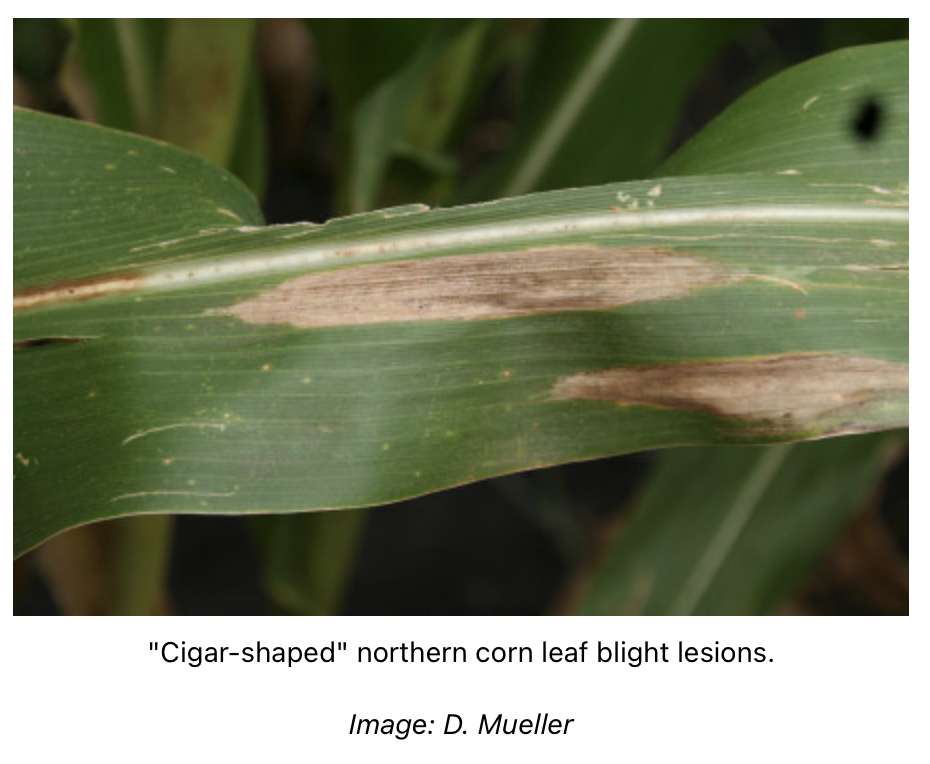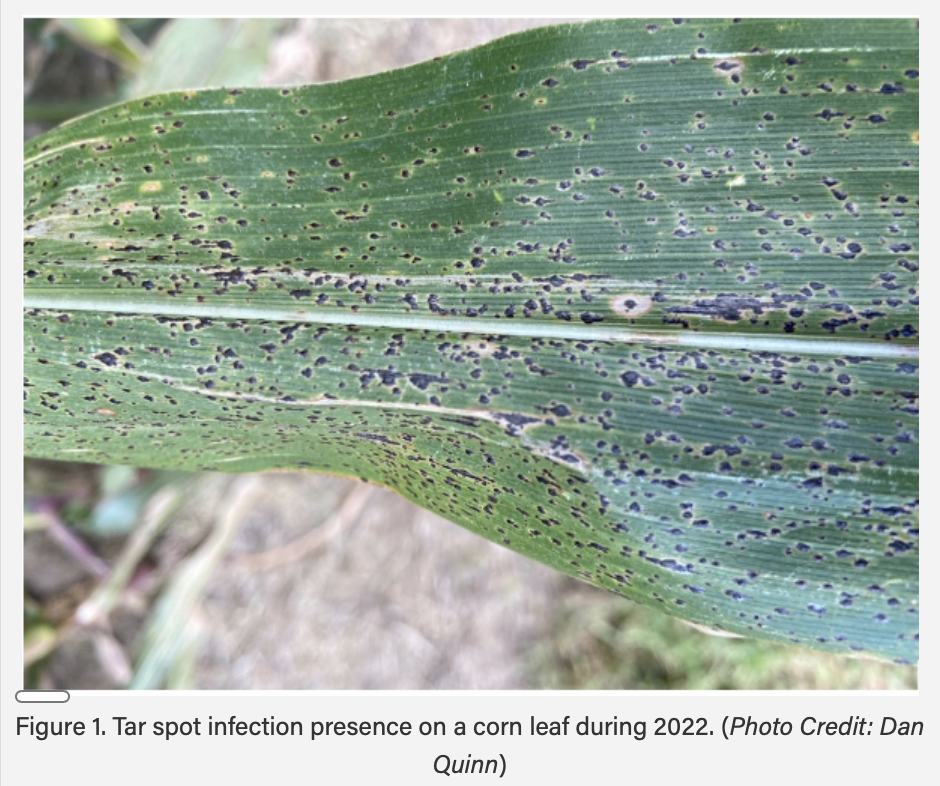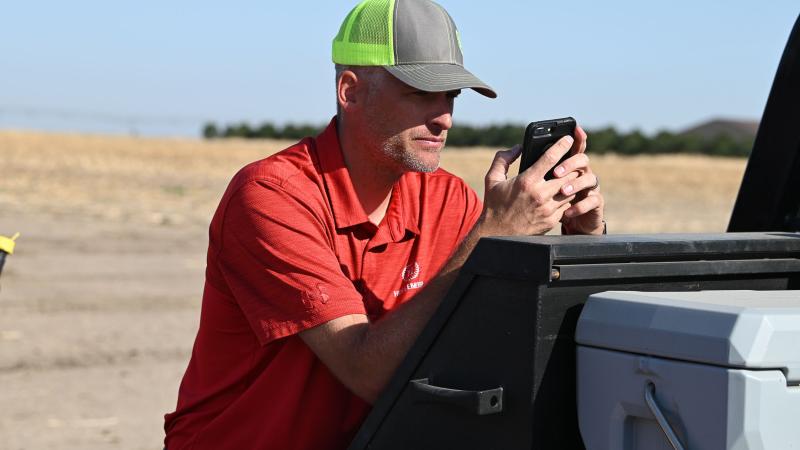Optimize Timing for Corn Foliar Fungicides
Tighter corn margins heading into spring can cause a pause when thinking through crop protection inputs. But foliar fungicide applications on corn have proven too valuable to cut for most growers, especially as the threat of tar spot continues to expand across the Corn Belt.
Results from over 2,000 Corteva on-farm foliar fungicide trials from 2007 to 2020 showed that disease pressure is the most critical factor determining the value of fungicides. When weather conditions favor foliar diseases, fungicides are beneficial. Corn yield increased an average of 7.4 bushels per acre across these trials.
Scout the Weather

Alison Robertson, plant pathologist at Iowa State University, says corn disease pathogens for northern corn leaf blight and gray leaf spot regularly occur in Corn Belt fields, with tar spot increasing. Disease often occurs with warm, moist weather and when susceptible corn hybrids are planted.
“Normal rainfall, higher humidity, and a lot of dew on leaves until 9 or 10 a.m. — those conditions favor the pathogens producing spores, which land on leaves to infect the plant and cause disease,” she says.
Start scouting when these environmental conditions are occurring around corn growth stage V16 to V18 (or V8 to V9 if you suspect tar spot). Begin with more disease-susceptible hybrids, low-lying fields, areas along a creek, and western sides of fields where dews tend to linger longer. “Visit these fields first. Look at the ear leaf and the canopy below the ear for any spots on leaves, whether it’s northern corn leaf blight, gray leaf spot, tar spot or rusts,” Robertson says.
She recommends examining a dozen plants in six or more locations per field. If you can see any spots developing in the canopy, that tells you conditions have been suitable for disease development.
When to Spray
The long-held blanket recommendation of one foliar fungicide application at VT to R1 on corn may be easy insurance. Yet, even after applying a fungicide, farmers should scout fields within two to three weeks of application to determine how much disease is present. A second application may be necessary to protect yield.
“My data in Iowa over the last 20 years has shown the best time to apply fungicide is R1 to R3 to manage gray leaf spot, northern corn leaf blight and tar spot,” Robertson says. “If you spray as early as V6, chances are you will need a second application for a couple reasons. One, only the leaves that received the fungicide are protected, and most of those leaves die before V12; and two, most fungicide products provide protection for three to four weeks. Farmers will miss protecting their crop against most disease infection that occurs later in the growing season in the Corn Belt and risk spending more money to spray twice.”
With two to three modes of action in current foliar fungicides, Robertson says, corn growers have two to three weeks to apply during the R1 to R3 (brown silk) growth stage to manage diseases before they impact yield. Multiple modes also reduce the potential for disease resistance.
She also advises watching the weather after noticing leaf diseases. “If a dry spell is forecast for the following two to four weeks, maybe you don’t want to apply a fungicide,” she says.
Tar Spot on the Rise

Robertson says grower unease about tar spot is leading to earlier applications, which results in spending more for two applications. “Plant pathologist Darcy Telenko at Purdue University, who’s dealt with tar spot longer than any of us, has only experienced one year where a double application was necessary due to infection during early growth stages.
“Unless you’re planting a really disease-susceptible hybrid, our current research in Iowa shows that our recommended R1 to R3 application timing will keep tar spot and other leaf diseases from impacting yield,” Robertson says.
Tar spot, a well-known leaf disease in Mexico, Central and South America, was initially found in the United States in Indiana in 2015. Since then, this yield-robbing disease has spread across the Corn Belt, as well as Florida and Canada, according to the USDA’s Agricultural Research Service and university plant pathologists.
The disease is characterized by raised black, tarlike spots (fungal structures called stromata) that are scattered across leaves and later may be observed on husks. This infection reduces photosynthesis of susceptible corn hybrids, killing plants and causing yield loss from 20 to 60 bushels per acre.
Scouting for tar spot should focus on the lower corn canopy early in the growing season, where spores of the overwintered disease will splash up from the ground. After VT, tar spot may be found anywhere in the canopy. If several tar spots are observed within the canopy, a fungicide application may be prudent.
Disease Predictions Apps
Two mobile apps that use GPS coordinates and weather-based crop disease risk prediction models to monitor tar spot are Tarspotter and Field Prophet. Robertson says more models are under development, thanks to the National Predictive Modeling Tool Initiative (NPMTI). “We’re testing models to predict more diseases like gray leaf spot, northern corn leaf blight and vomitoxin, perhaps in 2025 if congressional funding continues,” she adds.
Select Disease-resistant Hybrids
Finally, Robertson encourages farmers to plant more disease-resistant hybrids as a first line of defense, based on the seed company’s disease rating scale. The higher the resistance, the less chance a disease will reach a severity that reduces yield. She saw tar spot take over one hybrid in 2023, so checking disease resistance is critical.
Crop rotation, minimum tillage and plant health can impact disease, but only sometimes in a common-sense manner. “We’ve actually seen more severe tar spot in a corn-soybean rotation compared with continuous corn in southeast Iowa,” Robertson says. “We’ve also seen higher levels of disease on healthier corn, but also better yield response to fungicides that control these diseases.”
Content provided by DTN/The Progressive Farmer


